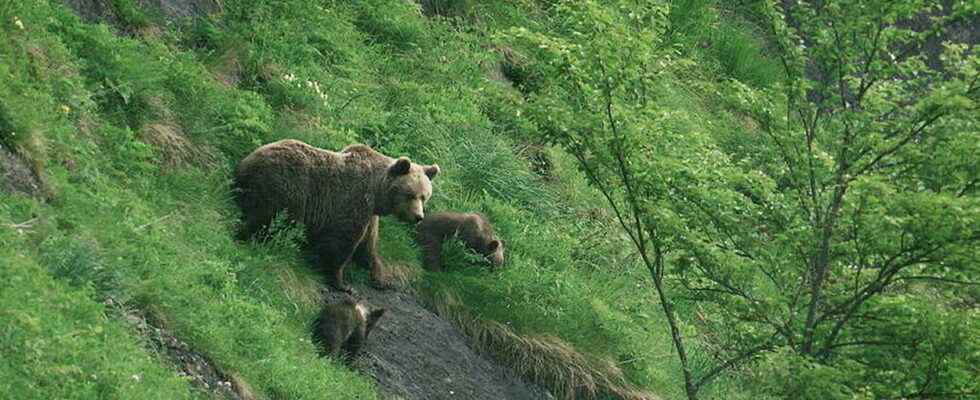Ubenevolent stalking through the “secret Pyrenees”. This is what Arte offers, from December 12, with the first episode of the series devoted to the fauna that inhabits the Pyrenean massif. A new kind of animal documentary, both a naturalist quest, an ode to the wild, a sensitive and manifest investigation for the living.
Armed with a walking stick, binoculars and a lot of patience, a figure guides us through the Pyrenees massif. An enclave of protected nature, between France and Spain, which still shelters most of the emblematic species of European fauna.
READ ALSO“The bear is the symbol of our connection to nature” Under his brown leather hat, the man walks slowly and cautiously, his senses alert. Through meadows, woods and ridges, he tracks brown bear, capercaillie, golden eagle, bearded vulture, chamois or Tengmalm’s owl.
This discreet human presence, which threads its way between groves, forests, cliffs and rivers, reveals the objective of this documentary proposed by Alwa Deluze, Laurent Nédélec and Grégory Ortet: to put the man in the place of a respectful observer and to propose ” images of free animals, filmed in their natural environment and with a concern for their peace of mind”. It took twenty months to film these rare and exceptional sequences in harsh mountain conditions.
The Milan Waltz
In each of the three forty-five-minute episodes, our guide, all in humility, shares with the spectator his emotions and his knowledge. The documentary, not very talkative, gives pride of place to sensations, sprinkling information on a sensitive story that illustrates splendid images with a neat frame.
READ ALSOFinistère: the wolf of discord
The spectator discovers paintings with impressive details: the fur of a great stag bellowing, the plumage of a griffon vulture, the waltz of the kites behind a mower, the oily waters of a misty pond or a moon sliding between two dark ridges.
The animals follow one another in an enchanting bestiary: the weasel that springs out of its burrow under the piercing eye of the marauding falcon, the kingfisher, the heron, the little egret, the viper snake, the bird- butterfly, black woodpecker, eagle-owl, otters and badgers…
mountain cleaner
This documentary is also a manifesto that reminds us that, even sheltered by its rock faces and its deep, centuries-old forests, the fauna of the Pyrenees suffers the consequences of human activity.
Thus the peregrine falcon, the fastest bird in the world in a dive with almost 400 km/h, almost disappeared in the 1950s because of DDT. Ingested by the prey of this raptor, the insecticide – now banned in France – weakened the shell of its eggs.
The series also highlights that, each year, nearly a million foxes, reputed to be harmful, are killed, that the forest cat is the last feline in the Pyrenees, that the otter population has been divided by ten in a century and that in less than thirty years, ten bears have been killed or poisoned in the Pyrenees, even though the species is protected.
The bearded vulture almost disappeared because of an ancestral belief that it devoured children. The rumor came from the fact that this majestic bird, of which there are two hundred pairs left in the massif, is capable of swallowing, in one go, bones of about twenty centimeters. This mountain cleaner, the largest bird in Europe with its three-meter wingspan, feeds on animal carcasses, preventing diseases from proliferating.
The genet, meanwhile, now belongs to the protected species, after having been hunted for a long time for its fur. Nocturnal and discreet, the heroine of the first episode of the series is probably the perfect illustration of the wild world celebrated by the documentary: she does not live very far from men, but no one really knows her.
“The Secret Pyrenees”, documentary series in three episodes (“The genette, discreet from Piedmont”; “The bear, the king of ancestral forests”; “The bearded vulture, corsair of the peaks”) proposed by Alwa Deluze, Laurent Nédélec and Grégory Ortet (Bellota Movies). Broadcast on Arte on December 19, 20 and 21 and available on Arte.tv from December 12, 2022.
